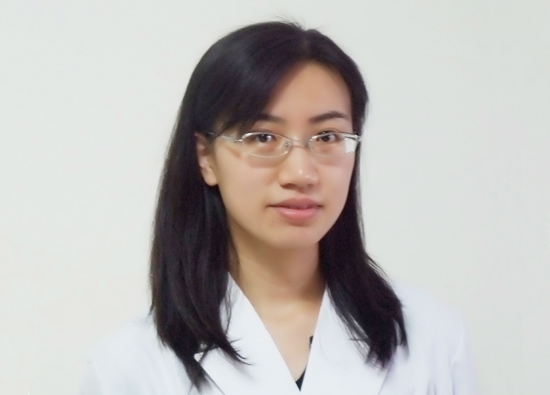12.2023 Life Guide
Lower back pain and back pain, be careful of ankylosing spondylitis
Dr. Zhang Tinghui, Allergy, Immunology and Rheumatology Department of Far Eastern Memorial Hospital /


 Almost everyone has experience with back pain and soreness. If you stay up late, work overtime, sit for long periods of time, move heavy objects, bend over to do things, have poor posture, and other behaviors accumulate over time, you are more likely to experience soreness problems. However, some symptoms of back pain actually carry the risk of serious illness, reminding everyone to pay attention.
Almost everyone has experience with back pain and soreness. If you stay up late, work overtime, sit for long periods of time, move heavy objects, bend over to do things, have poor posture, and other behaviors accumulate over time, you are more likely to experience soreness problems. However, some symptoms of back pain actually carry the risk of serious illness, reminding everyone to pay attention.Back pain accompanied by the following conditions requires early medical attention
Generally speaking, more than 80% of low back pain and soreness problems cannot find a specific cause, and usually improve gradually after a period of time, or can be improved within 1-2 weeks after using painkillers. This type of situation is mostly caused by poor posture due to work characteristics, leading to muscle soreness. Physical therapy such as electrotherapy and hot compress can be received at the rehabilitation department, as well as functional therapy based on functional training. However, a small number of back pain symptoms may be caused by diseases such as vertebral fractures, nerve compression, osteomyelitis, cancer bone metastasis, and ankylosing spondylitis. If accompanied by the following conditions, early medical attention should be sought.
1. Pain occurs after severe trauma or falls and impacts, which may be related to bone lesions caused by the trauma. It is recommended to seek medical attention from orthopedics or neurosurgery.
2. The appearance of neurological symptoms such as lower limb weakness, paralysis, urinary and fecal incontinence, or inability to urinate may involve nerve damage and is suitable for seeking medical attention in neurology or neurosurgery.
3. If you feel the most pain in the middle of the night or early morning, it is usually related to inflammation. It is recommended to consult an allergy immunology and rheumatology department.
4. If you experience symptoms such as weight loss and fever, you may consider seeking evaluation from an infectious disease or hematology oncology department.
Among various cases of back pain, although ankylosing spondylitis is not the most urgent disease, it is a chronic disease that requires long-term treatment and tracking. Patients often experience symptoms from a young age or even adolescence. Early detection and treatment can effectively improve prognosis and quality of life. However, due to the fluctuating symptoms, people often mistake it for general soreness. Some patients, even if they have a family history, still do not actively seek medical treatment, resulting in missing the golden time for early treatment, which is quite regrettable.
Symptoms of ankylosing spondylitis
Repeated back pain lasting more than three months, with increasing pain and stiffness as one sleeps, especially in the middle of the night or early morning. It takes more than half an hour of muscle and bone activity to subside after waking up; Sometimes pain occurs in the upper back of the shoulder and neck or in the middle of the scapula, especially in female patients who often exhibit atypical symptoms. In addition to back pain, some patients may experience pain or even swelling in the shoulder joint, hip joint (thigh root), knee, ankle, heel, sole, ribs on both sides of the chest, or pelvic edge, and there is no improvement for more than 1-2 months.
In addition, some patients are accustomed to chronic pain and do not seek special medical attention until acute iritis with blurred vision and photophobia in one eye and acute red eye pain is discovered. After being recommended by an ophthalmologist and referred to a rheumatology and immunology department for examination, it is only then discovered that they have ankylosing spondylitis; Some people may develop concurrent skin or nail psoriasis (with clearly defined thickening of the epidermis and sometimes white scales, also known as psoriasis or psoriasis), or develop inflammatory colitis, often with recurrent diarrhea and bloody stools. If there is suspicion of ankylosing spondylitis due to the above symptoms, X-rays can be used to check for inflammation of the sacral joint, and blood samples can be drawn to test HLA-B27. After ruling out other diseases and determining the diagnostic direction, treatment can begin.
Treatment of ankylosing spondylitis
When ankylosing spondylitis is severe, the spine may become sticky like a bamboo pole, with limited mobility and inability to bend or turn normally. Sometimes, it may also be accompanied by peripheral lower limb osteoarthritis. Therefore, in addition to improving pain, the most important goal of treatment is to reduce the complications of spinal adhesion.
There are two types of treatment methods: medication and non medication. In terms of drug treatment, non steroidal anti-inflammatory and analgesic drugs are the first line of choice, and most patients can achieve good improvement when using them during the inflammatory and painful stages; Sometimes, peripheral joint pain and inflammation can also be treated with immunomodulatory drugs (such as Silla enteric coated tablets). Due to the prolonged treatment required for this type of chronic disease, it is recommended to cooperate with physicians for follow-up visits to monitor side effects and efficacy. For patients with poor response or side effects to anti-inflammatory and analgesic drugs, injectable biologics or oral targeted small molecule drugs can also be chosen.
As for non pharmacological aspects, they mainly include: establishing exercise habits, physical therapy, quitting smoking, etc. Among them, exercise has a positive significance in reducing patient pain and maintaining range of activity.
conclusion
Medical development is advancing rapidly, with the development of injection therapy with biological agents and oral therapy with targeted drugs, opening a new door for patients with poor frontline treatment, hoping to have more comprehensive disease control.
*Dr. Zhang Tinghui's expertise includes autoimmune diseases such as gout, rheumatoid arthritis, ankylosing spondylitis, psoriatic arthritis, lupus erythematosus, Sjogren's disease, vasculitis, etc.
#




















